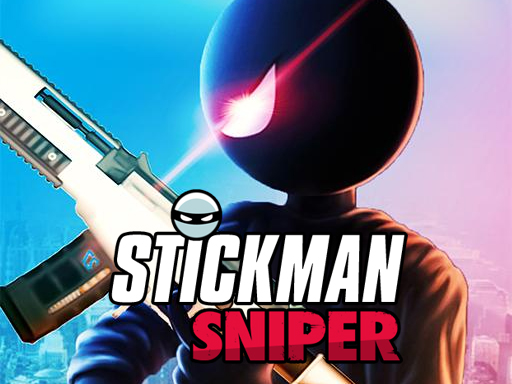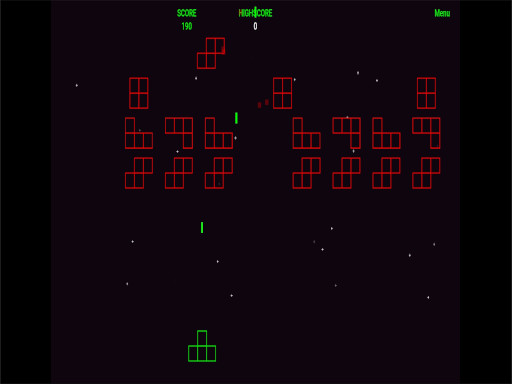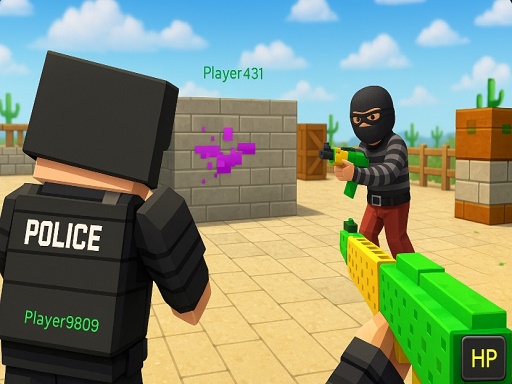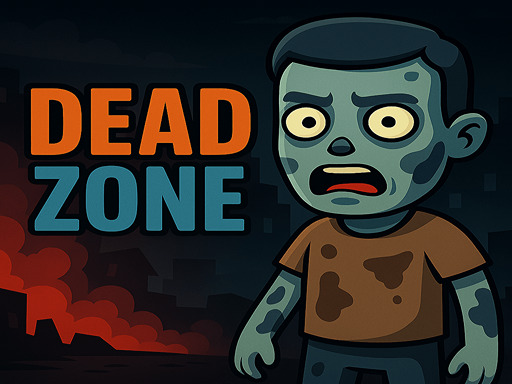Deadeye Gauntle
About Deadeye Gauntle
Okay, so listen, you know how I’m always on the hunt for that *one* game, the one that just completely blindsides you and makes you wonder where it’s been all your life? The kind of game that, when you finally put the controller down, you realize three hours have evaporated, and your shoulders are a little tense from pure, unadulterated focus? Yeah, well, I just found it. And I *have* to tell you about it. It’s called Deadeye Gauntle, and honestly, it’s… it’s something else.
I know, I know, "arrow-throwing challenge" might not immediately scream "next obsession," but trust me on this. I’ve always been drawn to games that demand a certain kind of precision, whether it’s the pixel-perfect jumps of a platformer or the almost surgical timing of a rhythm game. There’s something deeply satisfying about feeling your own skill evolve in real-time, that moment when a mechanic finally clicks and you’re no longer just *playing* the game, you’re *dancing* with it. Deadeye Gauntle taps into that in a way I haven't experienced in ages.
From the moment I first dropped into the initial trial, I could feel it. It’s not about some grand narrative or sprawling open world, though the environments are absolutely stunning. No, this is pure, distilled gameplay, a laser-focus on the art of the perfect shot. You’re presented with these scenarios, right? And your goal is simple: hit the target. But "simple" is the furthest thing from the truth. What’s fascinating is how they manage to make something so seemingly straightforward feel so incredibly deep and engaging.
You’re not just holding down a button and letting fly. Oh no. This is about *feel*. It’s about the subtle pressure you apply to the stick, the almost imperceptible twitch of your thumb that translates into the arc of your projectile. You can almost feel the weight of the arrow, the way it slices through the air. The sound design is a huge part of this too – that satisfying *thwip* as it leaves your hand, followed by the crisp *thwack* when it finds its mark. It’s incredibly tactile, even though you’re just holding a controller.
The first few levels are deceptive. They lull you into this false sense of security, you know? Just stationary targets, easy distances. You start feeling pretty good about yourself, like, "Yeah, I got this, I'm a natural." And then, BAM! The game just opens up, and you realize you've barely scratched the surface. Suddenly, you're not just aiming; you're *anticipating*.
The dynamic scenarios are where Deadeye Gauntle truly shines. Imagine this: you're in what looks like an ancient, crumbling temple. Dust motes dance in the shafts of light piercing through gaps in the ceiling. And then, these targets start to appear. Not just popping up, but *moving*. Sometimes they're swinging on ropes, sometimes they're mounted on these intricate, clockwork mechanisms that weave through the environment. You have to account for their speed, their trajectory, and your own projectile's travel time. It’s not just about pointing and shooting; it’s about leading the target, calculating the perfect moment to release.
And then they throw in the "tricky angles." This is where my brain really started to hum. You’ll have targets that are partially obscured, or behind a series of intricate environmental puzzles. Maybe you need to ricochet your arrow off a specific surface to hit a target that’s otherwise unreachable. Or perhaps there’s a sequence of targets, and you need to hit them in a specific order, or within a tight time window, each shot setting up the next. The brilliant thing about this is that it transforms a shooting challenge into a kind of physics-based puzzle, demanding not just raw aim, but clever spatial reasoning. You’re constantly analyzing the environment, looking for the optimal path, the hidden line of sight.
What I love about games like this is that feeling of constant escalation. With every accurate shot, you feel yourself climbing higher, not just in score, but in actual *skill*. You start to develop this almost instinctual understanding of the game's physics. You internalize the trajectory, the drop, the speed. It’s like learning a new language, where at first you’re fumbling for words, and then suddenly, you’re speaking fluently, almost without thinking. The game rewards that mastery in such a satisfying way, with new challenges, new environments, and increasingly complex target arrangements.
But here’s the kicker, the thing that truly sets Deadeye Gauntle apart and makes it so utterly addictive: "miss your mark, and the trial gets tougher." This isn't just a failure state; it's a dynamic difficulty modifier that keeps you on your toes. It’s not a simple "game over, try again." No, if you miss, the *next* sequence might introduce more moving parts, or a tighter time limit, or even smaller hitboxes. Sometimes, it feels like the wind picks up, subtly pushing your arrows off course. It’s a brilliant design choice because it doesn’t just punish you; it *challenges* you to adapt, to push through that increased difficulty. It makes every single shot feel incredibly high stakes. That tension, that slight tremor in your hand as you line up a crucial shot, knowing the consequences of a miss – that’s pure gaming gold right there.
I remember one particular level, it was in this kind of misty, overgrown forest setting. The targets were these glowing orbs that would dart between trees, briefly appearing in clearings before vanishing again. And there was this persistent, almost imperceptible wind. My first few attempts were a disaster. I was rushing, trying to snap-shoot, and just kept missing. The game kept adding more orbs, making them faster, shrinking their windows of opportunity. I was getting frustrated, honestly, but in that good way, you know? The kind of frustration that makes victory sweeter.
Then, something clicked. I stopped rushing. I started breathing, timing my shots to the *rhythm* of the orbs' movement, rather than just reacting. I started to account for the wind, aiming just slightly off-center, letting the invisible force guide my arrow into the sweet spot. And when I finally cleared that level, hitting that last elusive orb with a perfect, arcing shot that felt like it defied physics, the sense of accomplishment was immense. It wasn’t just a high score; it was a feeling of genuine mastery, like I’d truly *earned* it.
The real magic happens when you get into that flow state. You know the one I mean. Where the controller almost disappears in your hands, and you're just reacting, anticipating, executing. Your vision narrows, the background fades, and all that matters is the target, the trajectory, the perfect release. Time seems to stretch and compress. A minute feels like an eternity as you meticulously line up a shot, and then ten minutes flash by in what feels like seconds as you chain together a perfect sequence of hits. You can almost feel the tension in your shoulders, the slight clenching of your jaw, and then that incredible release of satisfaction when the *thwack* confirms your success.
What’s interesting is how varied the challenges become. You'll find yourself in these incredible, almost fantastical environments. One moment you're in a sleek, futuristic testing facility with laser grids and holographic targets, the next you're navigating a treacherous canyon where updrafts and downdrafts visibly affect your arrow's flight. The visual spectacle is always there, but it never overshadows the core gameplay. It always serves to enhance the challenge, to add another layer of complexity to your aim.
This makes me wonder about the developers, actually. They clearly understand what makes a skill-based game truly sing. It’s not just about difficulty; it’s about fair difficulty. It’s about giving you all the tools and information you need, but then demanding absolute perfection in your execution. It’s about making every failure feel like a learning opportunity, rather than a punishment. And the way they weave those gameplay features into the experience, making them feel like natural extensions of the world rather than a checklist of mechanics, is just brilliant.
Honestly, if you're looking for a game that will truly test your reflexes, your focus, and your ability to adapt under pressure, you *have* to check out Deadeye Gauntle. It's not just a game; it's an experience. It’s that pure, unadulterated joy of mastering a skill, of pushing your own limits, and feeling that incredible rush when everything finally clicks into place. It’s the kind of game that will make you lean forward in your chair, hold your breath, and then exhale in pure, triumphant satisfaction. Just wait until you encounter the levels with the multi-stage moving targets that require a perfect, timed sequence of ricochets. Your mind will be blown. Trust me, you'll thank me later.
I know, I know, "arrow-throwing challenge" might not immediately scream "next obsession," but trust me on this. I’ve always been drawn to games that demand a certain kind of precision, whether it’s the pixel-perfect jumps of a platformer or the almost surgical timing of a rhythm game. There’s something deeply satisfying about feeling your own skill evolve in real-time, that moment when a mechanic finally clicks and you’re no longer just *playing* the game, you’re *dancing* with it. Deadeye Gauntle taps into that in a way I haven't experienced in ages.
From the moment I first dropped into the initial trial, I could feel it. It’s not about some grand narrative or sprawling open world, though the environments are absolutely stunning. No, this is pure, distilled gameplay, a laser-focus on the art of the perfect shot. You’re presented with these scenarios, right? And your goal is simple: hit the target. But "simple" is the furthest thing from the truth. What’s fascinating is how they manage to make something so seemingly straightforward feel so incredibly deep and engaging.
You’re not just holding down a button and letting fly. Oh no. This is about *feel*. It’s about the subtle pressure you apply to the stick, the almost imperceptible twitch of your thumb that translates into the arc of your projectile. You can almost feel the weight of the arrow, the way it slices through the air. The sound design is a huge part of this too – that satisfying *thwip* as it leaves your hand, followed by the crisp *thwack* when it finds its mark. It’s incredibly tactile, even though you’re just holding a controller.
The first few levels are deceptive. They lull you into this false sense of security, you know? Just stationary targets, easy distances. You start feeling pretty good about yourself, like, "Yeah, I got this, I'm a natural." And then, BAM! The game just opens up, and you realize you've barely scratched the surface. Suddenly, you're not just aiming; you're *anticipating*.
The dynamic scenarios are where Deadeye Gauntle truly shines. Imagine this: you're in what looks like an ancient, crumbling temple. Dust motes dance in the shafts of light piercing through gaps in the ceiling. And then, these targets start to appear. Not just popping up, but *moving*. Sometimes they're swinging on ropes, sometimes they're mounted on these intricate, clockwork mechanisms that weave through the environment. You have to account for their speed, their trajectory, and your own projectile's travel time. It’s not just about pointing and shooting; it’s about leading the target, calculating the perfect moment to release.
And then they throw in the "tricky angles." This is where my brain really started to hum. You’ll have targets that are partially obscured, or behind a series of intricate environmental puzzles. Maybe you need to ricochet your arrow off a specific surface to hit a target that’s otherwise unreachable. Or perhaps there’s a sequence of targets, and you need to hit them in a specific order, or within a tight time window, each shot setting up the next. The brilliant thing about this is that it transforms a shooting challenge into a kind of physics-based puzzle, demanding not just raw aim, but clever spatial reasoning. You’re constantly analyzing the environment, looking for the optimal path, the hidden line of sight.
What I love about games like this is that feeling of constant escalation. With every accurate shot, you feel yourself climbing higher, not just in score, but in actual *skill*. You start to develop this almost instinctual understanding of the game's physics. You internalize the trajectory, the drop, the speed. It’s like learning a new language, where at first you’re fumbling for words, and then suddenly, you’re speaking fluently, almost without thinking. The game rewards that mastery in such a satisfying way, with new challenges, new environments, and increasingly complex target arrangements.
But here’s the kicker, the thing that truly sets Deadeye Gauntle apart and makes it so utterly addictive: "miss your mark, and the trial gets tougher." This isn't just a failure state; it's a dynamic difficulty modifier that keeps you on your toes. It’s not a simple "game over, try again." No, if you miss, the *next* sequence might introduce more moving parts, or a tighter time limit, or even smaller hitboxes. Sometimes, it feels like the wind picks up, subtly pushing your arrows off course. It’s a brilliant design choice because it doesn’t just punish you; it *challenges* you to adapt, to push through that increased difficulty. It makes every single shot feel incredibly high stakes. That tension, that slight tremor in your hand as you line up a crucial shot, knowing the consequences of a miss – that’s pure gaming gold right there.
I remember one particular level, it was in this kind of misty, overgrown forest setting. The targets were these glowing orbs that would dart between trees, briefly appearing in clearings before vanishing again. And there was this persistent, almost imperceptible wind. My first few attempts were a disaster. I was rushing, trying to snap-shoot, and just kept missing. The game kept adding more orbs, making them faster, shrinking their windows of opportunity. I was getting frustrated, honestly, but in that good way, you know? The kind of frustration that makes victory sweeter.
Then, something clicked. I stopped rushing. I started breathing, timing my shots to the *rhythm* of the orbs' movement, rather than just reacting. I started to account for the wind, aiming just slightly off-center, letting the invisible force guide my arrow into the sweet spot. And when I finally cleared that level, hitting that last elusive orb with a perfect, arcing shot that felt like it defied physics, the sense of accomplishment was immense. It wasn’t just a high score; it was a feeling of genuine mastery, like I’d truly *earned* it.
The real magic happens when you get into that flow state. You know the one I mean. Where the controller almost disappears in your hands, and you're just reacting, anticipating, executing. Your vision narrows, the background fades, and all that matters is the target, the trajectory, the perfect release. Time seems to stretch and compress. A minute feels like an eternity as you meticulously line up a shot, and then ten minutes flash by in what feels like seconds as you chain together a perfect sequence of hits. You can almost feel the tension in your shoulders, the slight clenching of your jaw, and then that incredible release of satisfaction when the *thwack* confirms your success.
What’s interesting is how varied the challenges become. You'll find yourself in these incredible, almost fantastical environments. One moment you're in a sleek, futuristic testing facility with laser grids and holographic targets, the next you're navigating a treacherous canyon where updrafts and downdrafts visibly affect your arrow's flight. The visual spectacle is always there, but it never overshadows the core gameplay. It always serves to enhance the challenge, to add another layer of complexity to your aim.
This makes me wonder about the developers, actually. They clearly understand what makes a skill-based game truly sing. It’s not just about difficulty; it’s about fair difficulty. It’s about giving you all the tools and information you need, but then demanding absolute perfection in your execution. It’s about making every failure feel like a learning opportunity, rather than a punishment. And the way they weave those gameplay features into the experience, making them feel like natural extensions of the world rather than a checklist of mechanics, is just brilliant.
Honestly, if you're looking for a game that will truly test your reflexes, your focus, and your ability to adapt under pressure, you *have* to check out Deadeye Gauntle. It's not just a game; it's an experience. It’s that pure, unadulterated joy of mastering a skill, of pushing your own limits, and feeling that incredible rush when everything finally clicks into place. It’s the kind of game that will make you lean forward in your chair, hold your breath, and then exhale in pure, triumphant satisfaction. Just wait until you encounter the levels with the multi-stage moving targets that require a perfect, timed sequence of ricochets. Your mind will be blown. Trust me, you'll thank me later.
Enjoy playing Deadeye Gauntle online for free on Qotori games. This Shooting game offers amazing gameplay and stunning graphics. No downloads required, play directly in your browser!
How to Play
Aim and shoot





Comments
This game is awesome! I love the graphics and gameplay.
One of the best games I've played recently. Highly recommended!